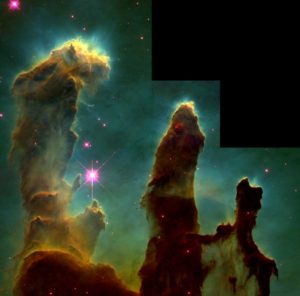Like the musical “Hamilton”, the James Webb Space Telescope lives up to the hype. Already, astronomers have used it to discover galaxies older and more distant than ever before, and it’s only getting started. One of the astronomical processes JWST will elucidate is the formation of stars. Understanding star formation is critical if we want to answer questions about the origin of life on Earth and the possibility for life elsewhere in the universe. But even though scientists have been thinking about star formation since before the word “scientist” existed, some of the most basic questions about the process remain unanswered.
Continue Readingstar formation
All posts tagged star formation
Wonderful event last Friday. Prof. Katie Devine talked about star formation and radio astronomy, engaging the crowd of a few dozen with anecdotes and rapid-fire wit. After the presentation, we enjoyed the beautiful evening weather and found the Sun, the Moon, and Jupiter in our telescopes.
I’ve posted her presentation below.
 What do “bubbles” and “yellowballs” have to do with star formation? Identified in mid-infrared Galactic plane surveys, these objects are both named for their appearance in infrared wavelengths.
What do “bubbles” and “yellowballs” have to do with star formation? Identified in mid-infrared Galactic plane surveys, these objects are both named for their appearance in infrared wavelengths.
Join the Boise State Physics Department and College of Idaho Prof. Katie Devine on Friday, June 2 at 7:30p to learn about the role they may play in triggering new star formation, and the work being done to explore this role.
The lecture will take place in the Multi-Purpose Classroom Building, room 101. After the lecture (assuming clear weather), we’ll move to the top of the Brady Garage to do some stargazing.
Contact Prof. Brian Jackson (bjackson@boisestate.edu) with questions.